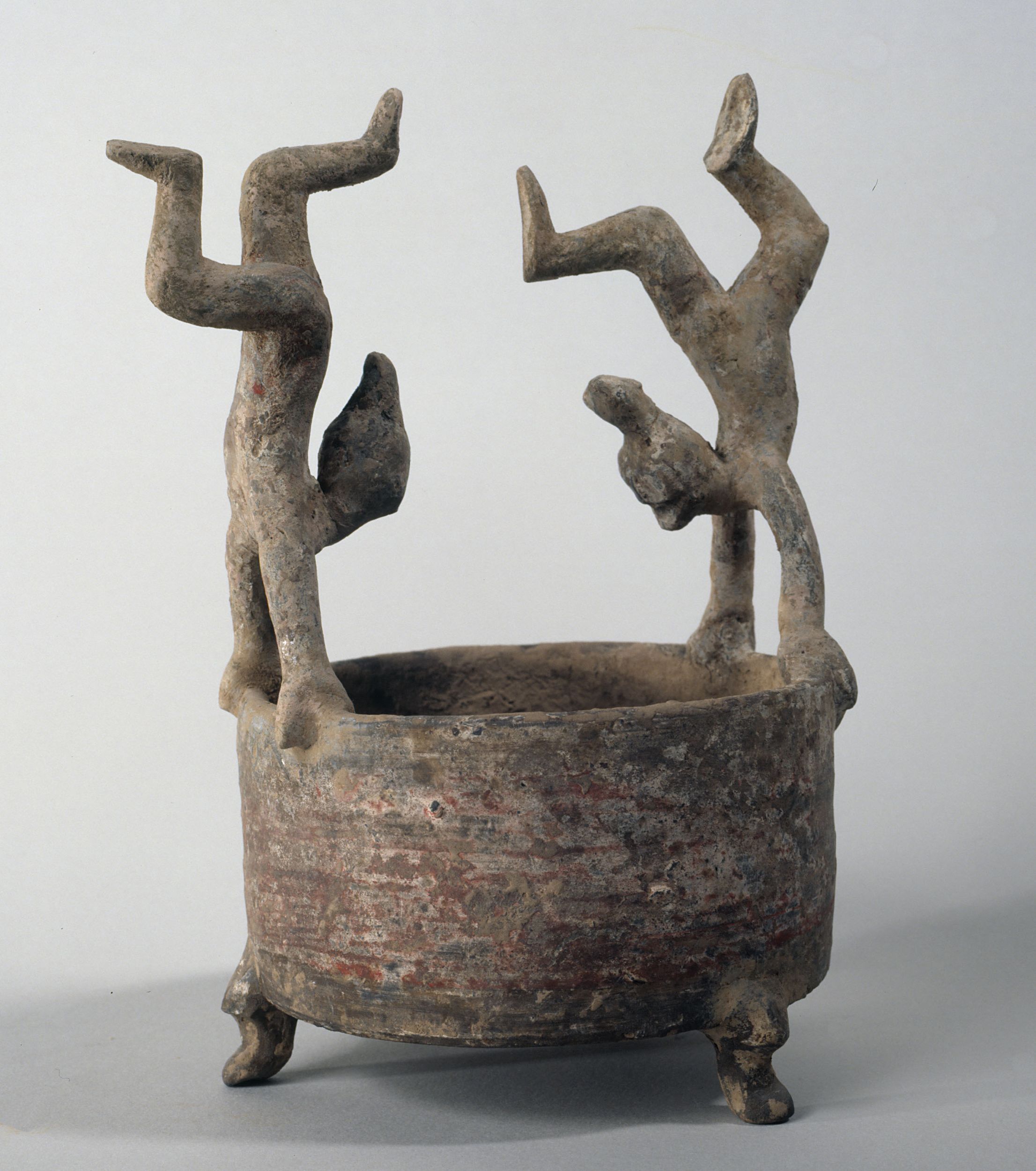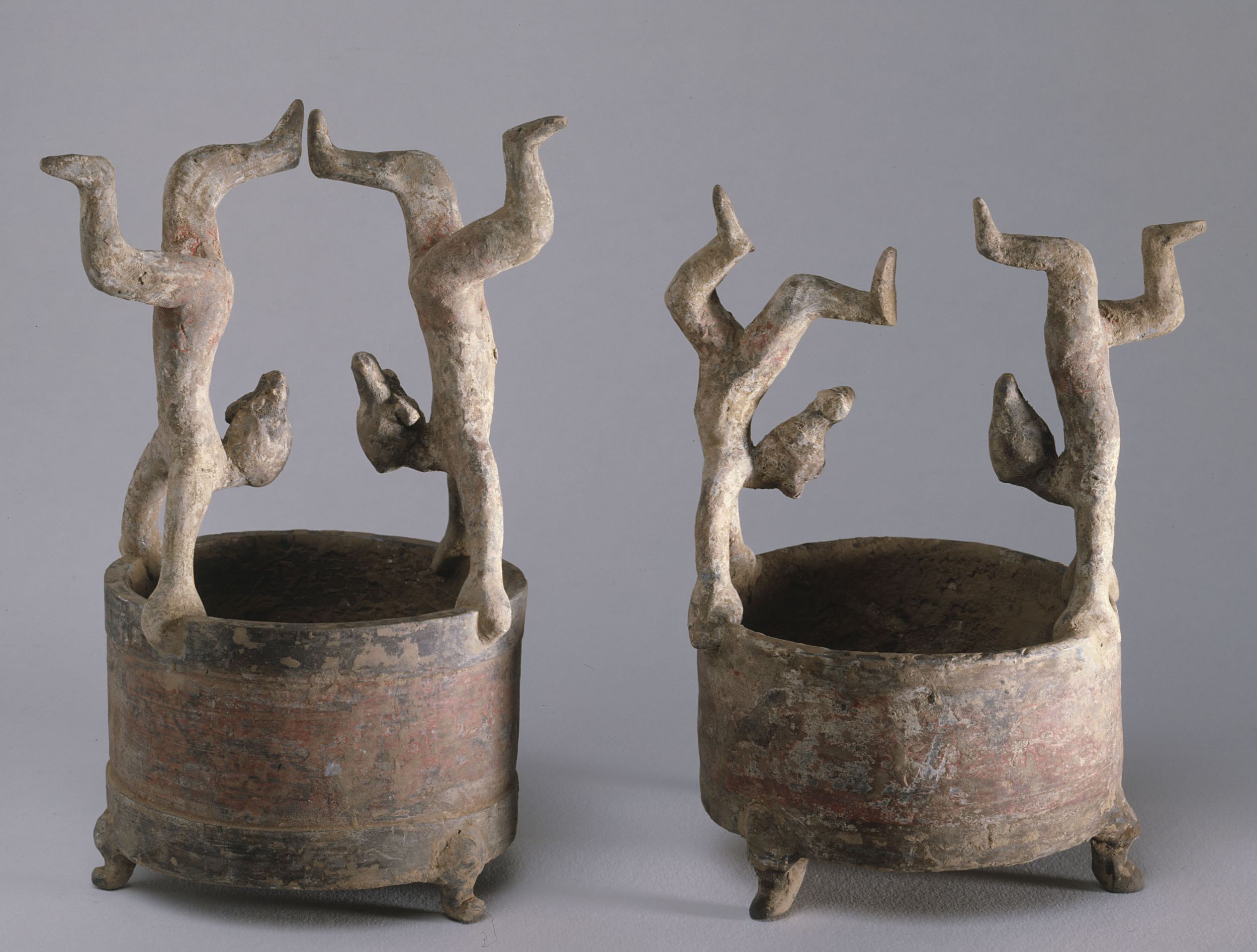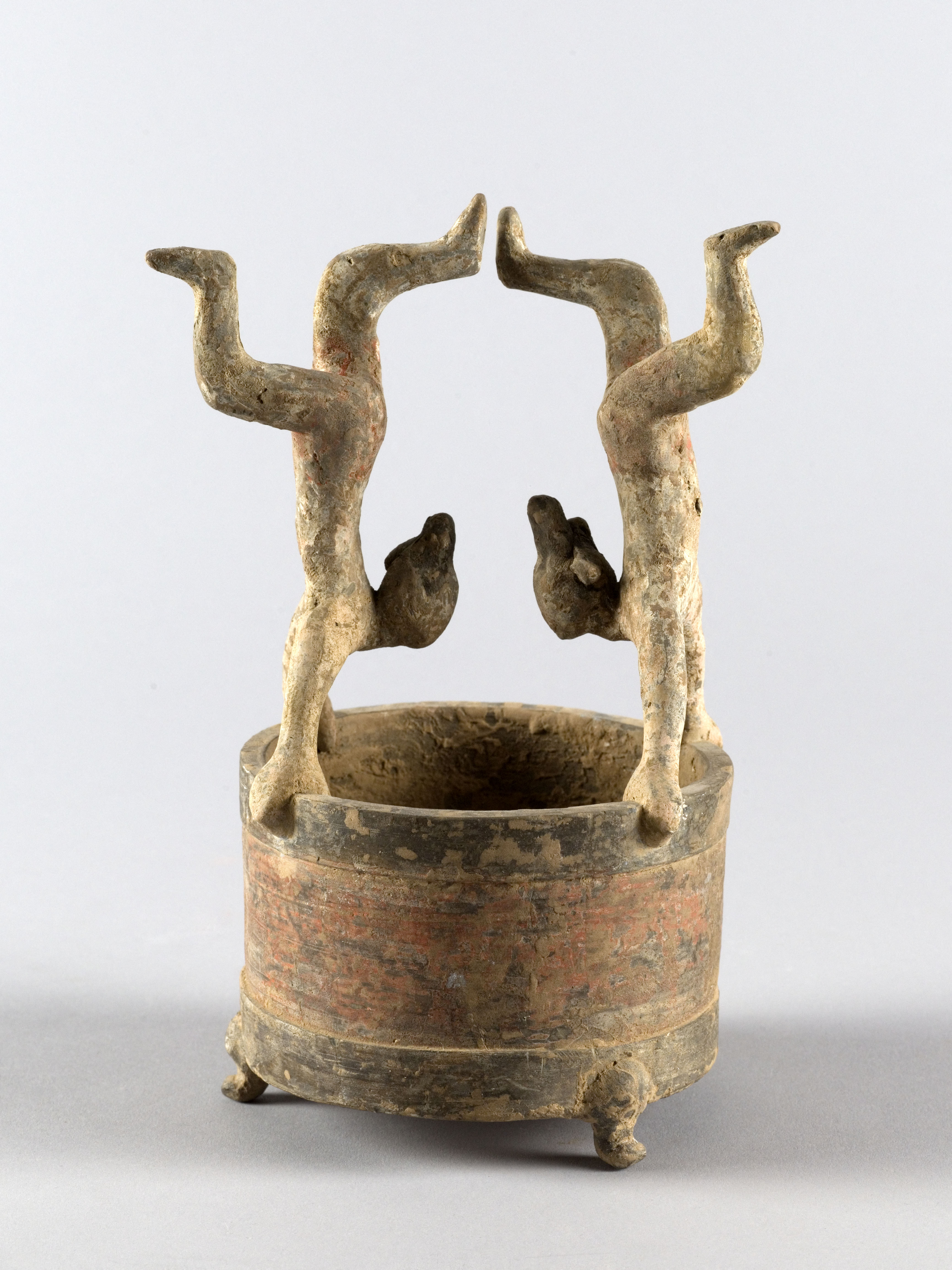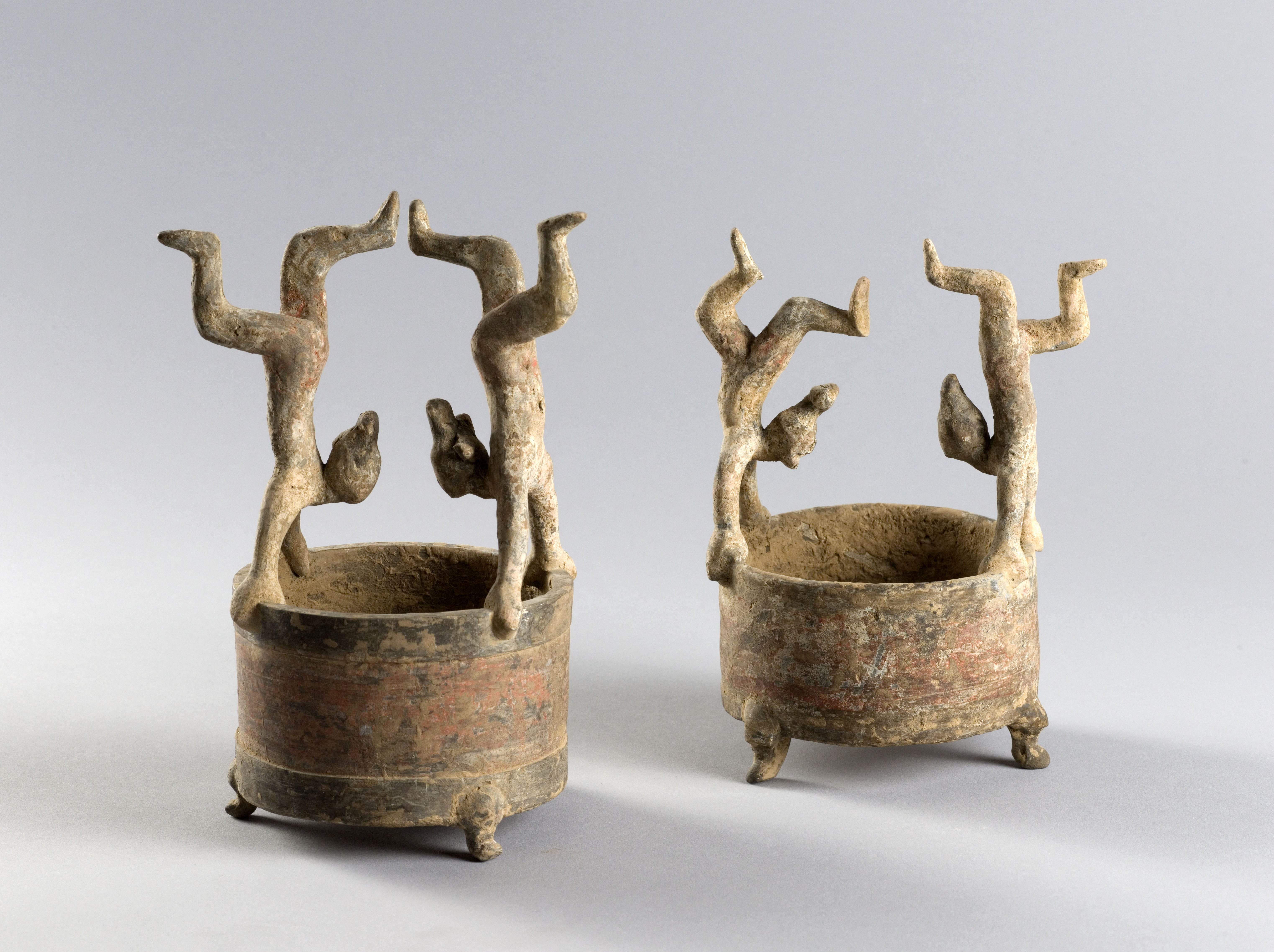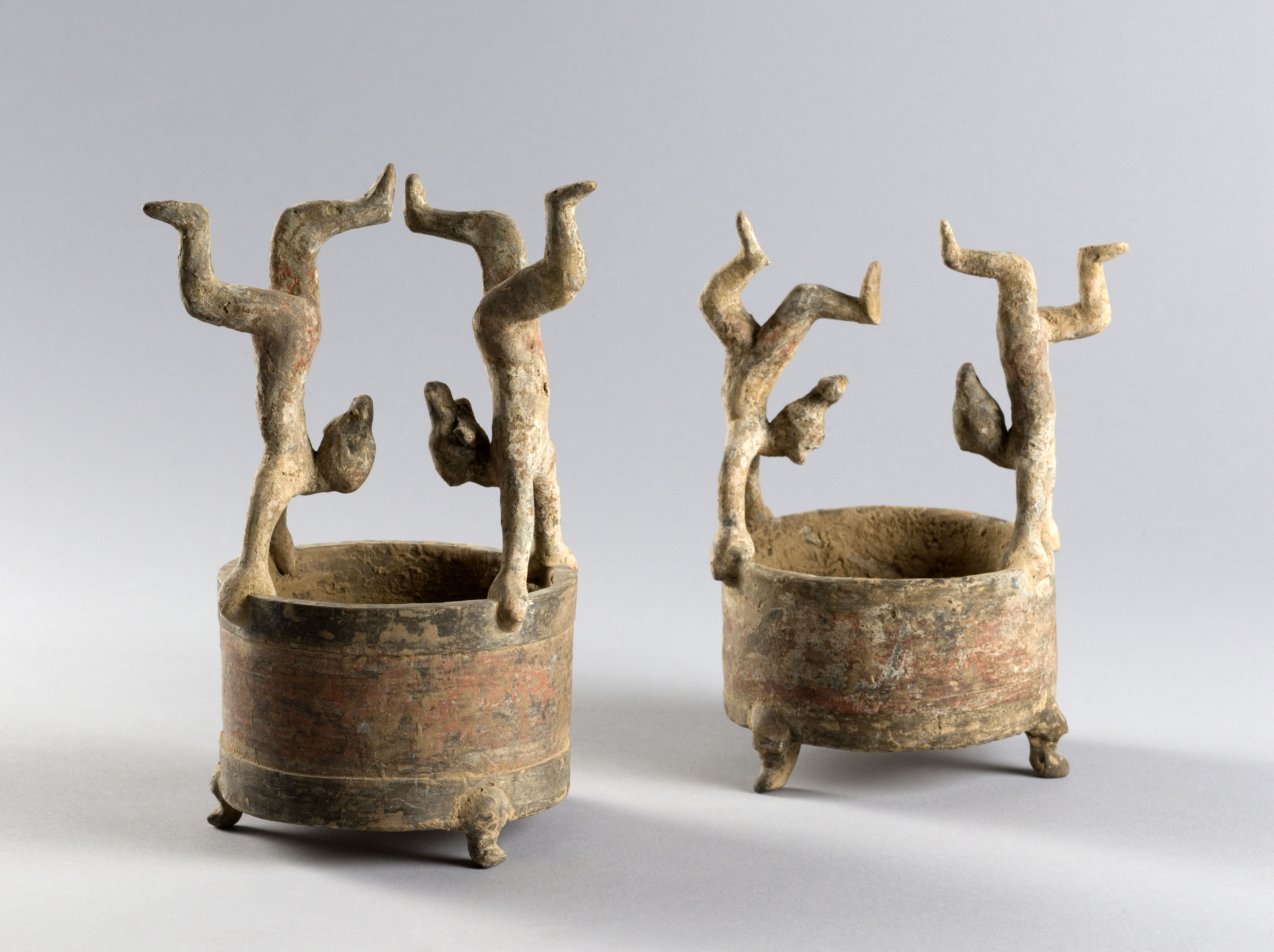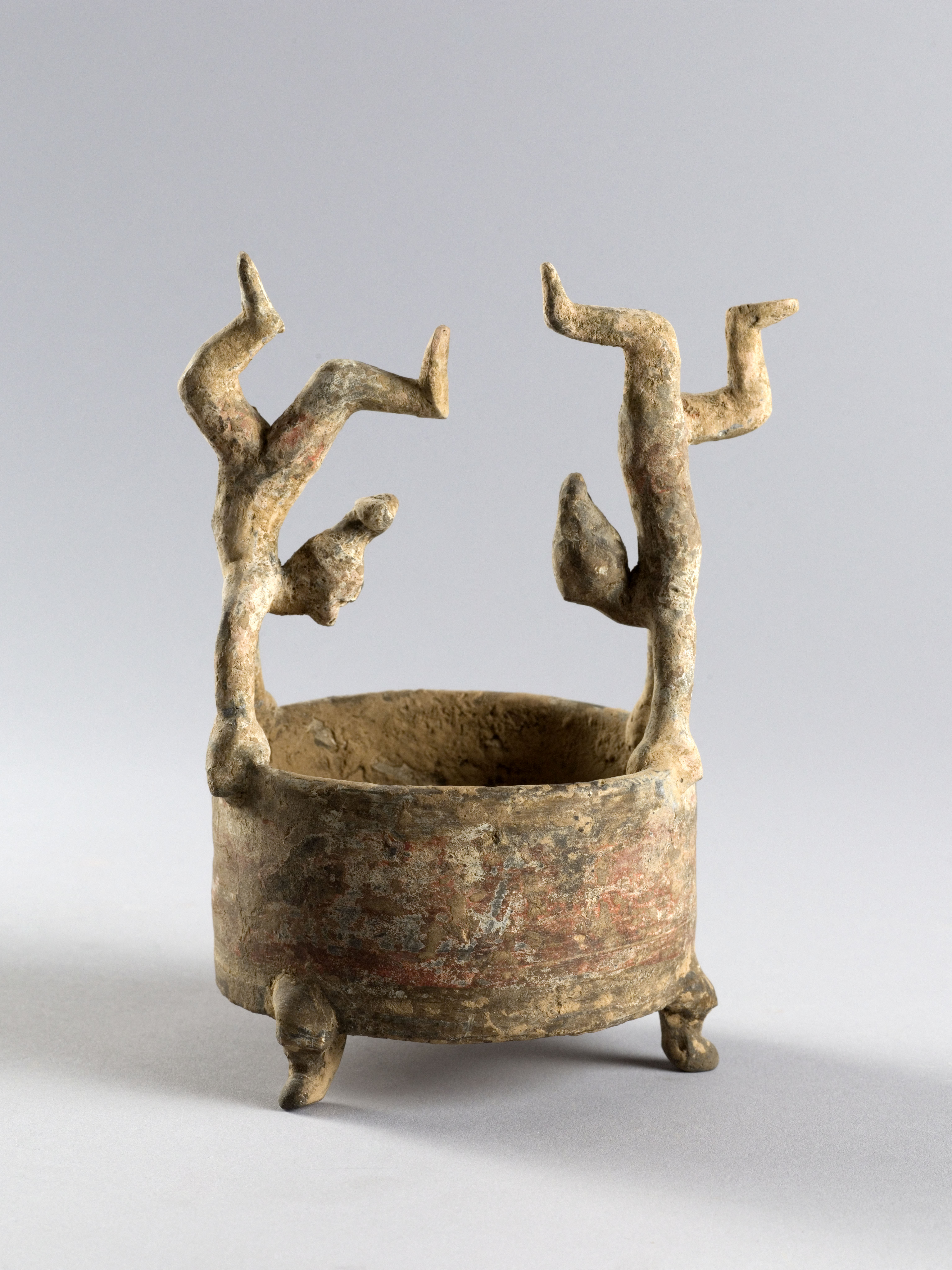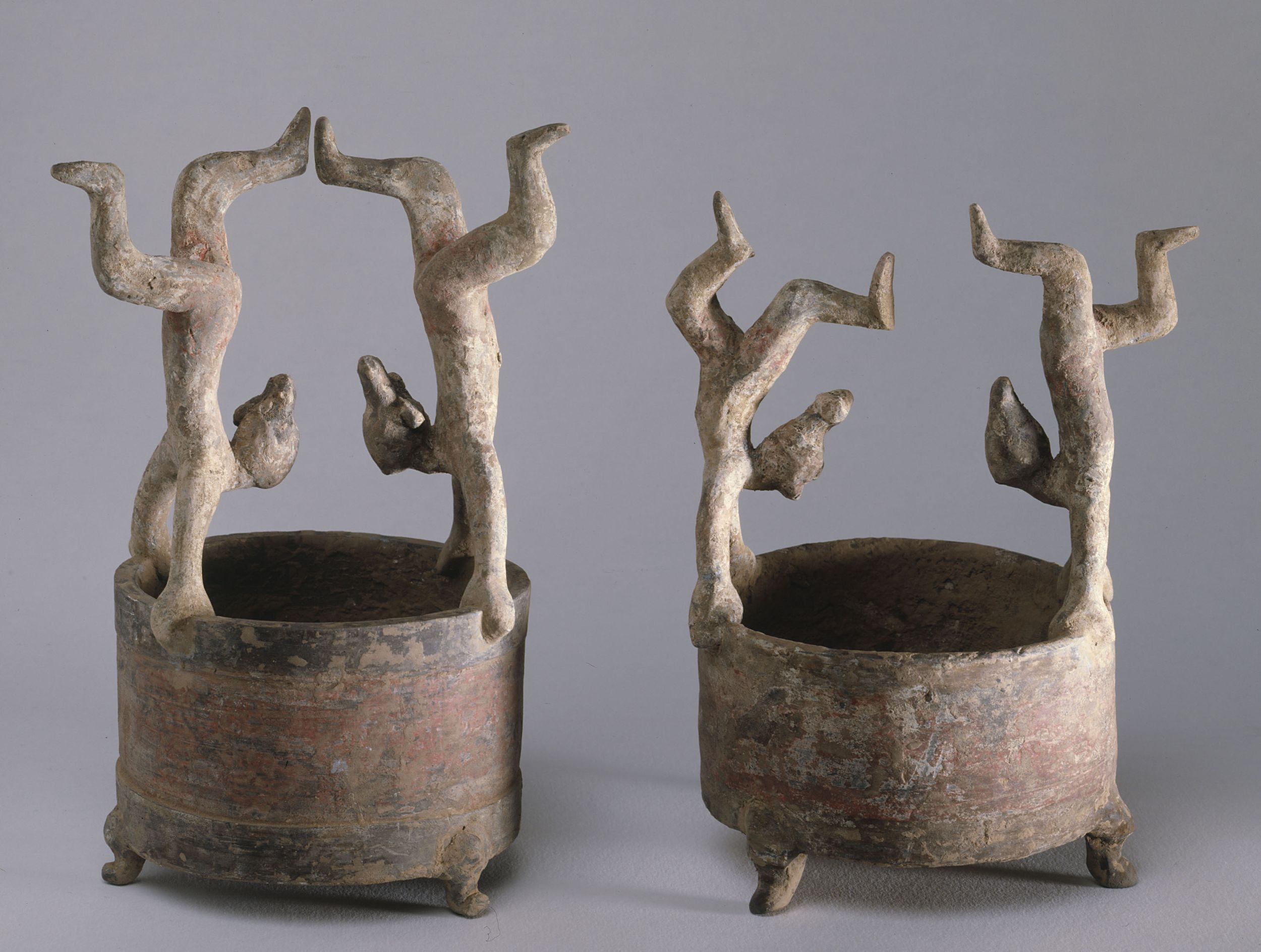
Vase pour réchauffer l'alccol (wenjiuzun 温酒尊)
Terre cuite, Couleurs - Pigments
Vase, Mingqi
Achat
M.C. 9799
Grave goods in the Han era (206 BC-AD 220) included pieces representing, among other themes, banquets with entertainment by orchestras, dancers and other attractions. The acrobats or contortionists forming the handles of this lian belong to this type of funerary iconography. Terracotta lian were made for the deceased as substitutes for real vessels used for fermented beverages.
The lian, generally with a lid and standing on three feet, often bear-shaped, was a wine vessel. Specimens have been found in bronze, sometimes gilded. These ones with three small feet are in terracotta. One is smooth and the other taller one has two bands in relief at the top and bottom, and no lid. Both support two figures of acrobats standing on their hands. The hands were welded to the rim of the pot during firing, showing that these two apparently disparate elements were joined from the outset.
This type of lian with acrobat handles is relatively rare, although several specimens were found in tombs at Luoyang, Henan.
Marie-Thérèse Bobot, Chine connue et inconnue : Dix années d'acquisitions au musée Cernuschi, Paris, Paris-Musées, 1992, p.76-77.
